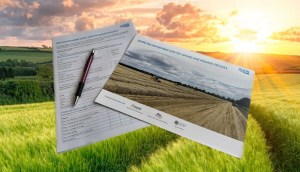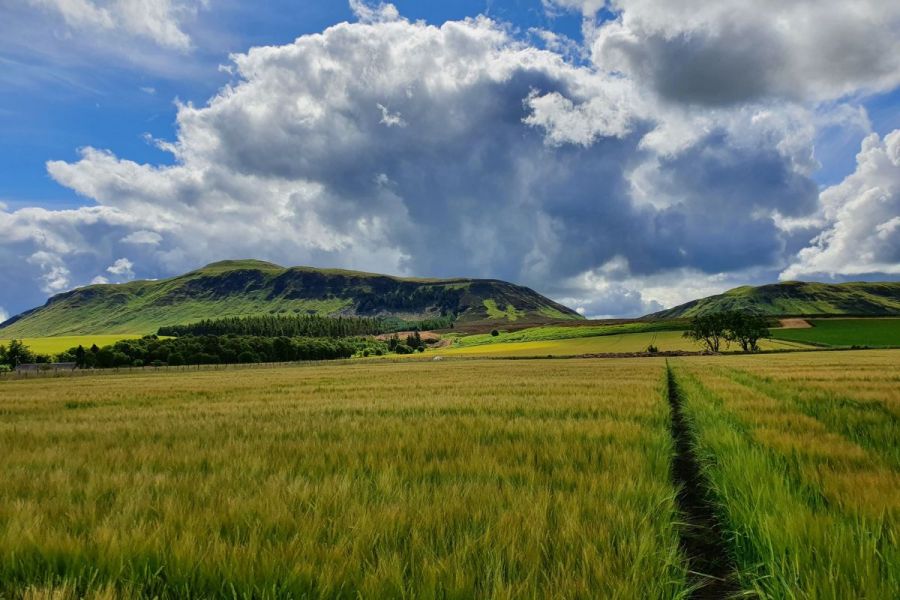From quick wins to longer-term adjustments, change is coming for the Recommended Lists for cereals and oilseeds. CPM delves into results from a recent large-scale public review to understand what this could mean for levy payers.
“Those who took part overwhelmingly agreed that the RL remains valued and continues to be used.”
By Janine Adamson
Change can be uncomfortable, however, in the words of Sir Winston Churchill: “To improve is to change; to be perfect is to change often.”
In pursuit of perfection, the AHDB Recommended Lists regularly go through a public review, and the results of the latest are just emerging. Embracing change may be a tricky feat in its own right, yet more than 900 people contributed their thoughts the recent review – an activity which by its nature, will instigate change.
Head of crop health and IPM, Jenna Watts, says because the RL scored 4.2/5.0 for importance during the recent Shape the Future industry consultation, the AHDB Cereals and Oilseeds sector council prioritised its review to ensure the variety trialling project remains relevant.

More than 900 people contributed their views to the recent RL review, of which three-quarters were farmers.
“RL reviews explore many aspects, from the type and nature of the trials to the way data is analysed. The results help AHDB to direct investment to make sure the RL delivers the most important variety data to the industry,” she says.
“Most people responded via a questionnaire, with around three-quarters of participants being farmers. Online focus groups also took place, as well as detailed stakeholder interviews.”
The RL project runs in phases, typically lasting five years, with the recent review scrutinising its current iteration. Although data analysis continues, initial results are starting to be revealed alongside corresponding potential outcomes.
“Key messages are emerging from the first stage of the review process, ranging from top-line themes to more granular detail. Encouragingly, the first point to share is that those who took part overwhelmingly agreed that the RL remains valued and continues to be used alongside personal experience on farm,” says Jenna.
“Respondents mostly indicated that there’s a strong demand for new varieties, and 80% said the number of varieties on the RL is right. But although happy with the size of the RL, which has previously been questioned by some, the focus groups revealed a desire to further understand how varieties enter and exit the list.”
According to Jenna, one reason for wanting to know more about list entry and exit is pest and disease resistance – questioning why certain varieties remain on the RL despite offering lower scores. “There are specific criteria for pest and disease resistance, which the crop committees continue to adhere to when considering varieties,” she explains. “However, annual discussions take place as to whether those criteria should be adjusted, meaning there could soon be implications for what makes it onto and off the RL as soon as 2023/24.
“This curiosity also confirms the importance of those pest and disease ratings, which is a continual theme throughout the review data.”
It’s important to note that this isn’t a new finding. During the last major RL review, which took place between 2017 and 2019, most respondents rated disease resistance and untreated yield as very important or crucial when selecting a variety. The latest results show this remains the case.
Given this hasn’t gone away, what could prove a quick-win solution, suggests Jenna, is improving the presentation of the RL tables, which should be a relatively easy fix. “At the moment, pest and disease scores are further down the tables, despite being of high importance to growers.

According to Jenna Watts, existing RL data could be reassessed to achieve indicators for attributes such as consistency and resilience.
“We know the information which growers find most useful, so reordering the tables to make these features more prominent is a small, but impactful change. We’re polling different table formats with levy payers at events this summer to find out which is the preferred layout,” she says.
The reason behind this continued shift in priorities remains the same – crop protection product revocations and pesticide resistance issues mean interest in what a variety offers is growing, from the seed up. This, coupled with volatile input prices and availability, plus a desire to operate more sustainably, means the pressure is on the RL to provide additional data.
Jenna explains offering information about how a variety performs within different systems, specifically with lower fungicide and nutrient inputs, is one of the most desired changes to the RL. “This is a much longer-term project involving evidence gathering, analysing historical data and assessing comparable international RLs.
“The complication is understanding what constitutes a ‘typical’ current-day fungicide programme. Currently the RL has trials at two clear ends of the spectrum – belt-and-braces to show the genetic potential of a variety, and fungicide untreated. But what would be a realistic mid-point? It’s a muddy area,” she says.
Other requested new attributes to the RL include the introduction of scores for vigour, consistency of performance and resilience. Jenna warns that, again, providing new information isn’t an overnight job, in fact, it would take around two to three years to gather enough results to claim a robust data set if further trials are required.
“We’re already investigating vigour, which came up in the previous review, but the work is still in progress due to environmental influences and genetic variables. Unfortunately, there’s a time lag and investment will have to continue to ensure this work lives on,” she says.
“As for consistency and resilience, admittedly there’s the opportunity to reassess existing data and cut it in a different way to achieve indicators for these attributes. I think there’s more we could do without instigating more trials, it just involves some heavy statistical crunching.”
Analysis of the review has highlighted other areas which could be addressed through working existing AHDB data harder, or by bringing it closer to levy payers’ attention. In some cases, further information is collected, but it just isn’t being translated through to growers.
This is the case for trial sites – an area for exploration is the possibility of linking RL and weather data sets, which could provide further insight into climatic factors such as rainfall and soil temperature.
“Again, this came through during the review, a request to understand how varieties perform within different climates. Using what’s already available to us from local weather stations is a good starting point which we can then build on,” she says. “In fact, we could make it easier to find information on RL trials full stop, including soil type which is available as part of the harvest results.”
Jenna believes improving the transparency of work associated with the RL projects remains a task in progress, and that accessibility appears to be a barrier. “Some of the information requested during the review is already available but deeper within the website. There is also clear interest in AHDB communicating development work, such as the investigation into the vigour attribute.
“We should also reconsider the functionality of our digital offers – the Variety Selection tool and RL smartphone app.”

AHDB wants to understand why the digital Variety Selection tool hasn’t taken off despite the overall popularity of the RL.
Despite the RL being a much-loved system overall, the corresponding Variety Selection tool is something that hasn’t seen much uptake among growers or agronomists, despite there being demand to personalise RL information to specific requirements.
“Unfortunately the digital Variety Selection tool hasn’t taken off. We’d like to understand why this is and if we can improve it with a view to a future re-launch. Compared with the website or paper versions, it should be simple and intuitive to use,” she says.
“Of course, given this will take investment, the AHDB will have to be confident in that exercise being a good use of levy payers’ money,” concludes Jenna.
Results of the review continue to be scrutinised by the AHDB Cereals and Oilseeds sector council and RL Board. It’s hoped firmer details regarding upcoming changes, including a timeframe for delivery, will be released this winter. In the meantime, the RL summer edition has been released and is available on the AHDB website.
This article was taken from the latest issue of CPM. Read the article in full here.
For more articles like this, subscribe here.
Sign up for Crop Production Magazine’s FREE e-newsletter here.




